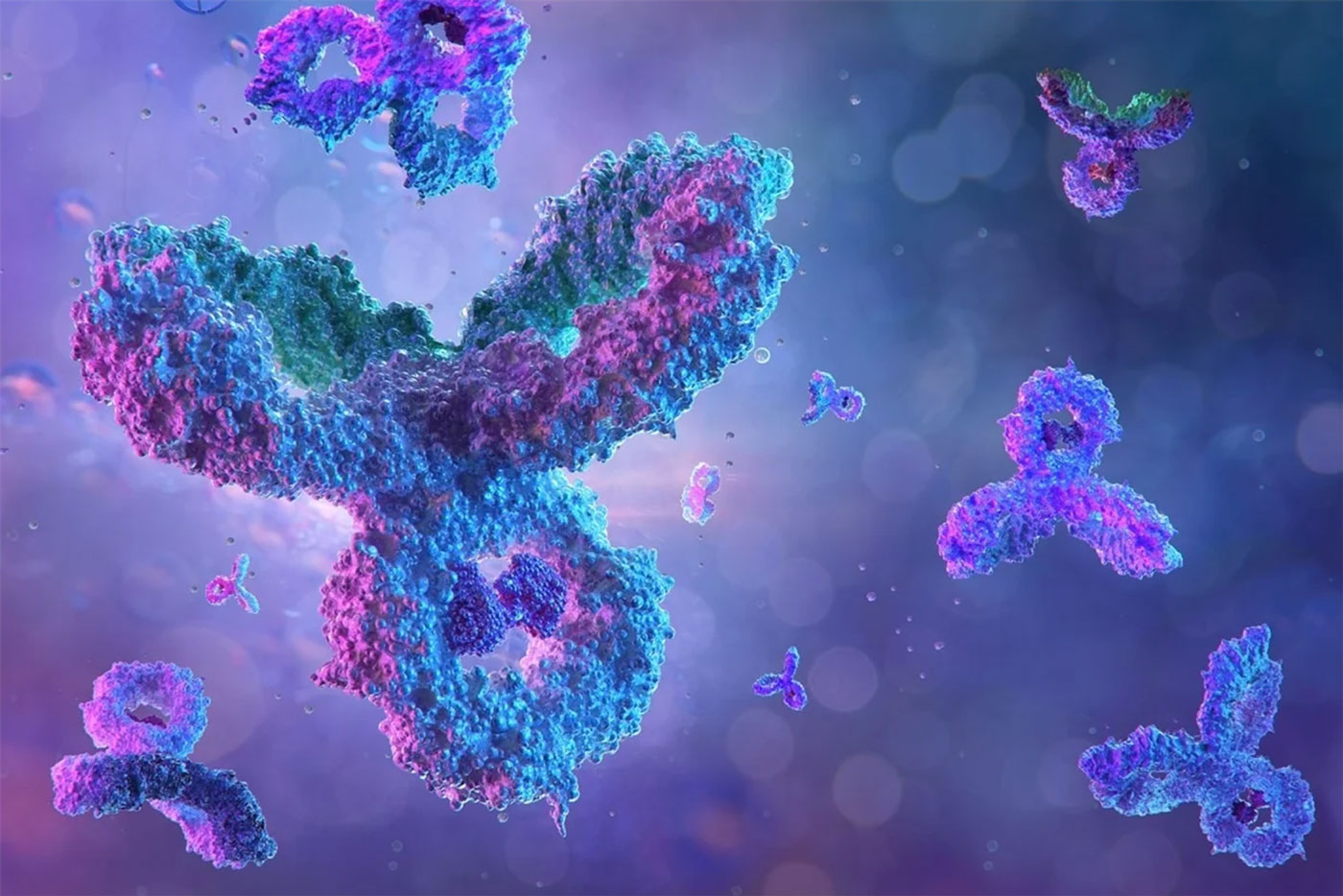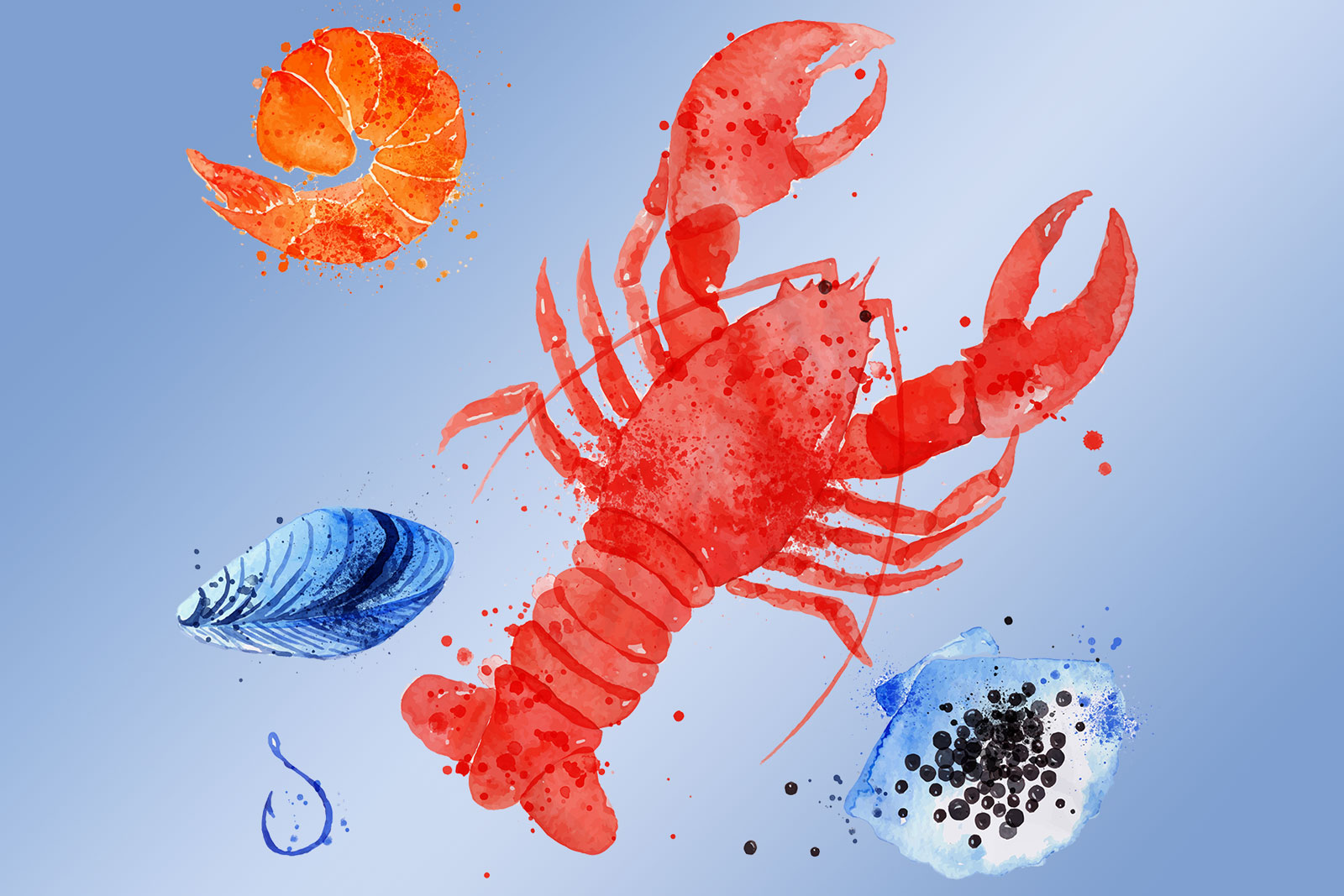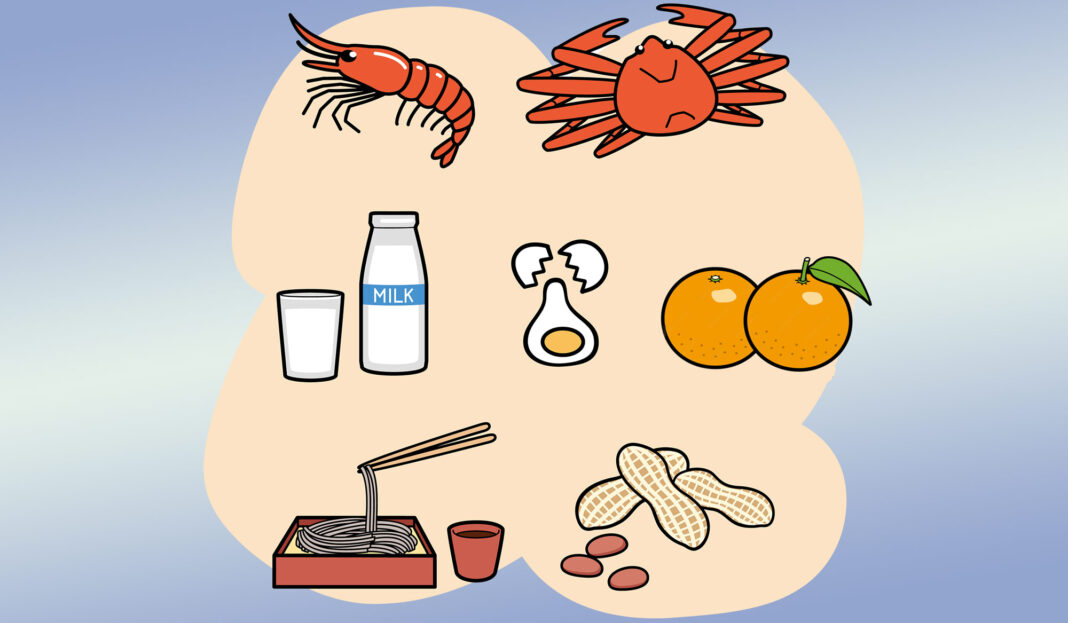About a third of people suffer from allergies – and half of them have food allergies. Up to 90% of food allergies occur to 8 food categories – and the presence of the appropriate ingredients should be displayed on the packaging.
Up to 35% of adults suffer from some type of allergy, concludes a statistical study published in 2020. More than half of this number have food allergies – often to quite common foods.
The most common food allergens are certain proteins in foods – mistaken by the immune system as harmful. The following is a list of the most common food allergens that should be listed on the package.
Food allergies – what are they?

Humans, like other mammals, are a protein-based life form. Protein is used by the body both to form muscle and connective tissue and to replicate DNA. The system for processing and assimilation of proteins from food is significantly more complex than, for example, the system for assimilation of carbohydrates.
In some cases, the natural components of the protein structures of certain foods cause an undesirable reaction of the immune system – taking them as harmful. In this case, we are talking about the fact that a person may observe food allergies when eating such food.
The situation is exacerbated by the fact that the mechanism of the immune reaction is not only extremely complex, but can vary significantly depending on the allergen – many aspects of food allergies are still on the list of topics actively being studied by science.
How does it manifest itself?
In most cases, the body’s immune response to a food allergen manifests itself quite quickly – figures from a few minutes to 1-2 hours are found in the literature².
The duration and intensity of symptoms can vary widely – depending on the allergen and the dose consumed – lasting from several days to several weeks.
Symptomatology can also be extremely variable, ranging from mild discomfort to a life-threatening condition. Consult a specialist for details.
The most common food allergens

Let us caveat that non-allergic food hypersensitivity (“food intolerance”) – for example, to lactose or to fructose – is not a category of allergy. Recall that lactose and fructose are types of carbohydrates, whereas allergens usually include substances of protein nature.
1. Nuts
Peanuts, Brazil nuts, walnuts, cashews, almonds, macadamia nuts, pistachios, and hazelnuts contain components that can act as food allergens.
Statistics³, allergies to any type of nut are the most common – representing 0.1 to 4.3% of all food allergies (numbers vary depending on studies).
2. Fruit
Allergic reactions most often occur with citrus fruits (especially oranges), apples, and plums – but can occur with strawberries and other fruits.
The prevalence of an allergy to any fruit ranges from 0.1 to 4.3% of all food allergies – occurring even when juices are consumed.
3. Wheat
Gluten is a protein component of wheat (and some other cereals) that can cause an allergic reaction in some people.
The prevalence of gluten allergies varies widely, with numbers commonly cited ranging from 0.5 to 1.3% of all reported food allergies.
4. Milk
As mentioned above, milk allergy is not equivalent to lactose intolerance – and is often provoked by the complex protein casein or beta-lactoglobulin.
Data suggest that milk components act as a food allergen in about 0.9% of all food allergies.
5. Soya
Some people’s bodies are unable to properly respond to ingestion of soy protein components – provoking an allergic reaction.
Importantly, soy is widely used in the production of all kinds of products – including baby food. The prevalence of soy allergy is up to 0.7% of all food allergies.
6. Shrimp and crustaceans
Note that an allergic reaction to the tropomyosin protein in crustacean muscle tissue can be extremely intense – potentially endangering human life.
In many cases, this kind of allergy occurs as an adult – if you haven’t eaten shrimp in a long time, be extra careful. The prevalence of this allergy is about 0.6% of all food allergies.
7. Eggs
Chicken egg proteins contain 2 substances that can provoke allergies – ovalbumin and lysozyme. Lysozyme is also used as a food preservative and as a component for clarifying wine.
In about 0.3% of all food allergies, the aforementioned ovalbumin and lysozyme are the cause – and at minimal doses (that is, when consumed as an ingredient).
8. Fish
It is important to distinguish an allergic reaction to fish from an allergic reaction to seafood. In the case of fish, the cause is the low molecular weight protein parvalbumin.
Since fish protein can be found in many foods, allergies can be caused by more than just the fish itself. Parvalbumin accounts for up to 0.3% of all food allergies.
Allergenic Substance Labeling

According to the regulations approved food allergen labeling, allergy-inducing substances must be mentioned on food labels.
The paper mentions that the 8 substances listed below have been found to be responsible for 90% of food allergies:
- Grains containing gluten (namely wheat, rye, barley, oats, spelt, their hybridized species and their products)
- Crustaceans and products thereof
- eggs and egg products
- fish and fish products
- Peanuts, soybeans and their products
- milk and milk products (including lactose)
- hazelnuts and products thereof
Sulfites
The eighth item on the official allergen list is sulfites. If a food product consists of or contains sulfites in a concentration of 10 parts per million or more, the functional class of the sulfite and its name must be indicated in the ingredient list.
Sulphites are all types of sulphur compounds (metabisulphite; sulphur salts containing potassium, calcium or sodium; hydrogen sulphide and sulphur dioxide). They can be found in a range of foods, both naturally and through ingestion during food processing.
About a third of citizens suffer from allergies – and half of them have food allergies. Up to 90% of food allergies occur to 8 categories of products – and the presence of the relevant components must be displayed on the packaging.
Sources:
- Self-reported allergies impact on skin, source
- Diagnosis of food allergies, link
- Epidemiology of food allergy, pdf
- Food allergen labeling guidelines, pdf
Read also:
- How do I check my gastrointestinal function?Stomach pain, constipation or diarrhea, bloating, belching, heartburn? These are all symptoms of problems in the gastrointestinal tract. It starts with the mouth and esophagus and ends with the intestines and rectum.
- What are the benefits of hazelnut oil for the skin?Hazelnut oil is rich in vitamins and essential fatty acids that nourish the skin. Here are a few reasons why you should add this oil to your skin care routine.
- Immune-boosting aromatic oilsThere are many products and treatments that can help your body to build a natural resistance to the harsh winter months, and aromatherapy is one of them. There are many studies supporting the healing power of aromatherapy and it is good for both mental and physical health. Aromatic essential oils also have many health benefits… Read more: Immune-boosting aromatic oils
- Marula Oil Benefits, Uses, and PrecautionsMarula Oil is an exotic oil that comes from the African Marula tree. It’s a good ingredient for skin, hair, and nails. Learn more about the benefits and precautions of Marula Oil with our guide.
- Goal setting for students, children and young peopleRemember when you learned how to set goals? If you have trouble answering this question, you are not alone! Most of us don’t spend much time thinking about how we set our goals. In fact, many of us don’t even think of goal setting as a skill; rather, it’s something we do without much thought.… Read more: Goal setting for students, children and young people
The articles on this site are for information purposes only. The site administrators are not responsible for attempting to apply any recipe, advice or diet, nor do they guarantee that the information provided will help or harm you personally. Be cautious and always consult a doctor or nutritionist!
*All products recommended are selected by our editorial team. Some of our articles include affiliate links. If you buy something through one of these links, you help us earn a small commission from the seller and thus support the writing of useful and quality articles.










